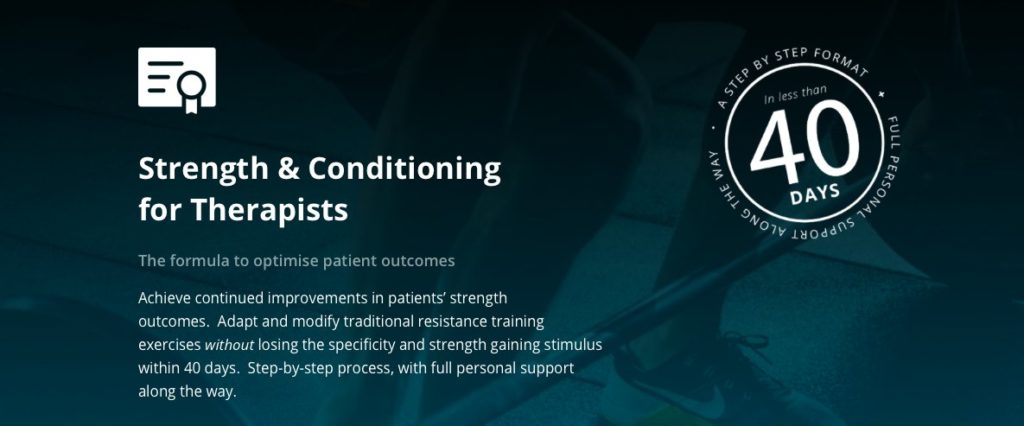Hi there, we’re changing things up a little this week. Today in this short video for post 59 of strength & conditioning for therapists we’re going to have quick look at maintaining specificity through exercise adaptation.
The Challenge of Rehabilitation
Have you ever found yourself reducing the load of an exercise because it’s provocative to your patients symptoms? Maybe it provokes pain or discomfort as they embark on compressive joint loading or, when they move through a particular range of movement.
Perhaps your patient for clinical or post-operative reasons is restricted to a single joint position, or limited range.
Maintaining Specificity
These situation are common in rehab and they can be quite challenging, especially if you determine that you really need to improve strength for example.
What do you do here? Do you:
- Bin the exercise and wait?
- Lower the load and keep the exercise?
- Do something else entirely?
If you recall, way back we discussed the principles of training and the need for maintaining specificity if we want to be effective in our exercise prescription. What are the consequences of lowering the load to muscle strength adaptation in this example?
Maintaining Specificity through Exercise Adaptation
In this video I give you some very quick tips to get you thinking creatively – if you need the muscles to work hard, you have lots of options!
Want to lean more?

Enrolment to this course opens just twice per year. Click below to find out more.


